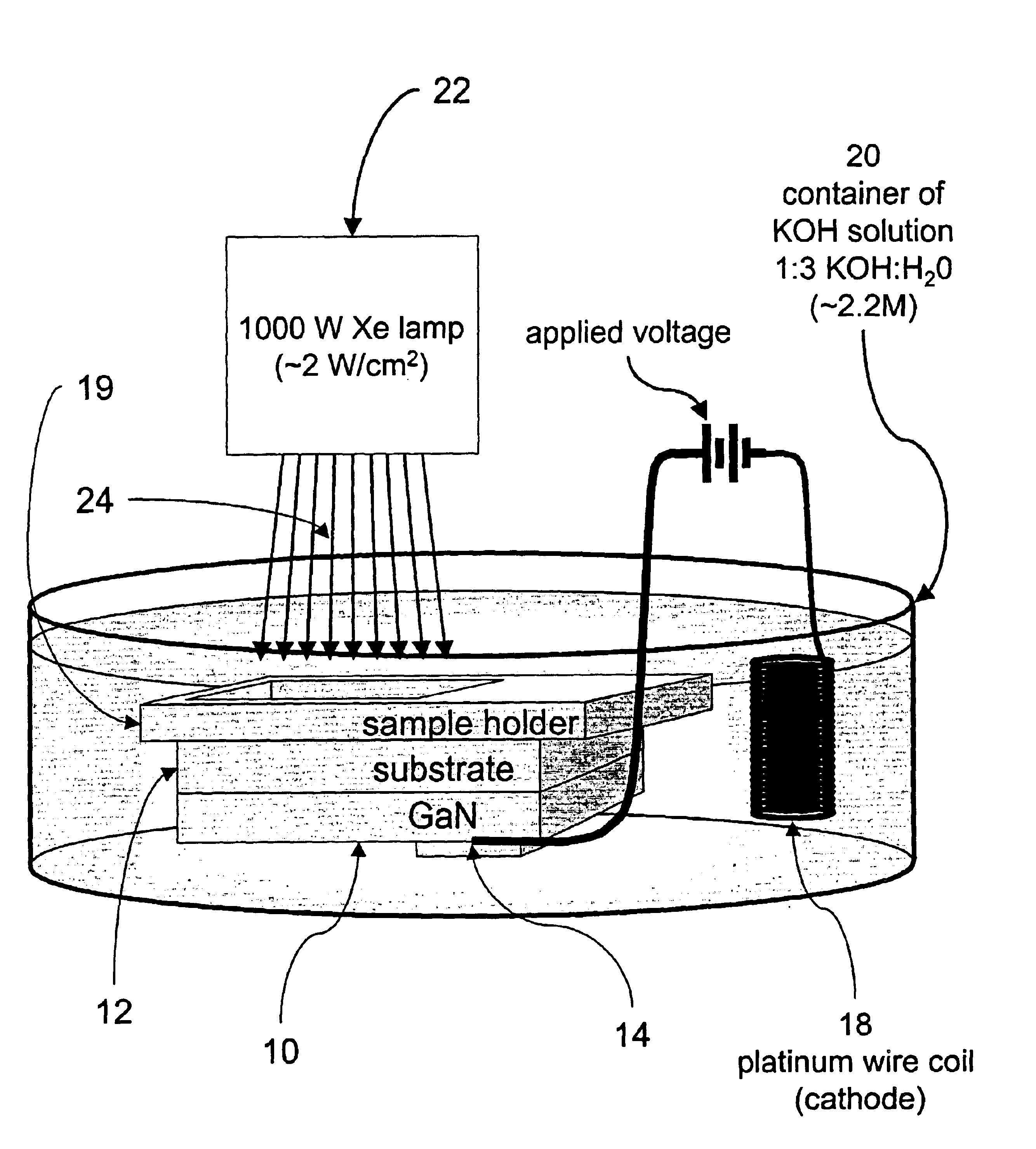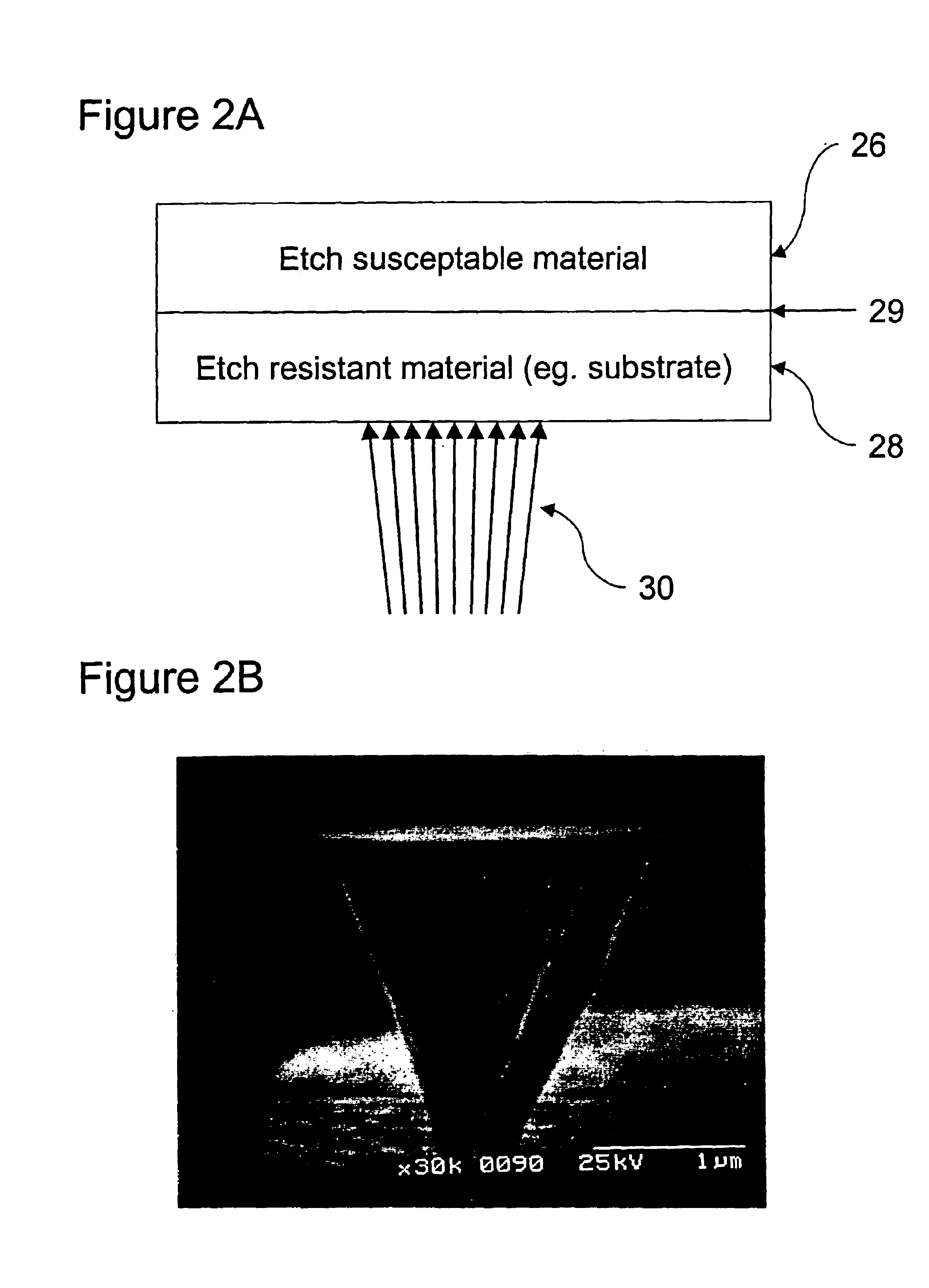Photoelectrochemical undercut etching of semiconductor material
a technology of photoelectrochemical and semiconductor materials, applied in the direction of semiconductor devices, electrical equipment, decorative arts, etc., can solve the difficulty of identifying reliable and controllable wet etchants, and the anisotropy of pec etching, etc., to achieve small energy shift and strong undercut
- Summary
- Abstract
- Description
- Claims
- Application Information
AI Technical Summary
Benefits of technology
Problems solved by technology
Method used
Image
Examples
example 1
[0066]A Current Apertured Vertical Electron Transistor (CAVET) 64 is fabricated by the application of this invention to a target layer located just below the gate of a vertical transistor structure, as shown in FIG. 6. The structure is grown to include a target layer 66 of indium gallium nitride between the source 68 and the drain 70. This is then laterally etched using the techniques of this invention to produce the undercut structure shown in FIG. 6 The resulting aperture between the source 68 and the drain 70 enhances the pinch-off of the gate 72 by providing a highly insulating air-gap 74 which confines the current to the area below the gate 72, while retaining a larger area for use as source and drain contacts to either side of the aperture.
example 2
[0067]Cantilevers formed of gallium nitride are fabricated by including a target layer of indium gallium nitride in the growth of a thicker layer of gallium nitride. This is then patterned and etched by a vertical etch of prior art to define the area of the cantilever, and its supporting base. The indium gallium nitride layer is then partially etched by the technique shown in FIG. 5, using the mask 62 shown to define which areas are separated from the lower layer of gallium nitride. A broad range of conditions have been shown to be suitable for such an etch. In the case shown a KOH concentration of 2.2 molar was employed, as was a simple platinum-wire cathode, and a relevant illumination intensity of 2 watts per square centimeter.
[0068]The resulting cantilevers are shown in a scanning electron micrograph in FIG. 7A, and schematically before and after lateral etching in FIGS. 7B and C respectively. The strain state in the as grown material is shown in 7B, It is the relaxation of this...
example 3
[0070]The procedure of Example 2 was followed but a thin layer of indium gallium nitride (a quantum well) was included near the top of the cantilever. Plots showing resonant responses of the fabricated GaN and InGaN cantilevers are shown in FIG. 7D, and are labeled InGaN / GaN cantilevers.
PUM
| Property | Measurement | Unit |
|---|---|---|
| thickness | aaaaa | aaaaa |
| thickness | aaaaa | aaaaa |
| thickness | aaaaa | aaaaa |
Abstract
Description
Claims
Application Information
 Login to View More
Login to View More - R&D
- Intellectual Property
- Life Sciences
- Materials
- Tech Scout
- Unparalleled Data Quality
- Higher Quality Content
- 60% Fewer Hallucinations
Browse by: Latest US Patents, China's latest patents, Technical Efficacy Thesaurus, Application Domain, Technology Topic, Popular Technical Reports.
© 2025 PatSnap. All rights reserved.Legal|Privacy policy|Modern Slavery Act Transparency Statement|Sitemap|About US| Contact US: help@patsnap.com



